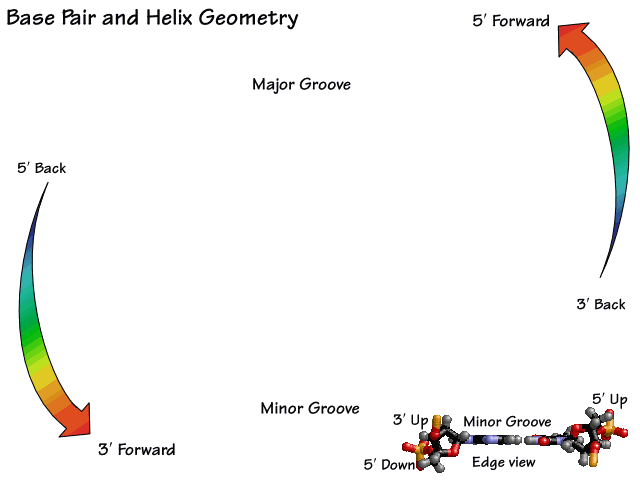
This illustration shows how the geometry of the DNA helix arises from the geometry of the Watson-Crick base pair. Given the anti conformation about the glycosidic bond and a one-bp repeat, the base pair in front of the one we start with must be rotated counter-clockwise in order to bring its 5' phosphate into coincidence with the 3' hydroxyl of the starting base pair on the left. The pseudodyad symmetry of the base pair means that 5' to 3' out of the page on the left requires 5' to 3' into the page on the right, i.e. antiparallel strands. Also, we can see that looking edge on into the minor groove the DNA backbone goes from 5' to 3' upward on the left and downward on the right.
Some people may get a better intuitive feel for how this works by looking
at the
ChemDraw version, essentially a cleaned-up version of something you could
easily do with pencil and paper.
